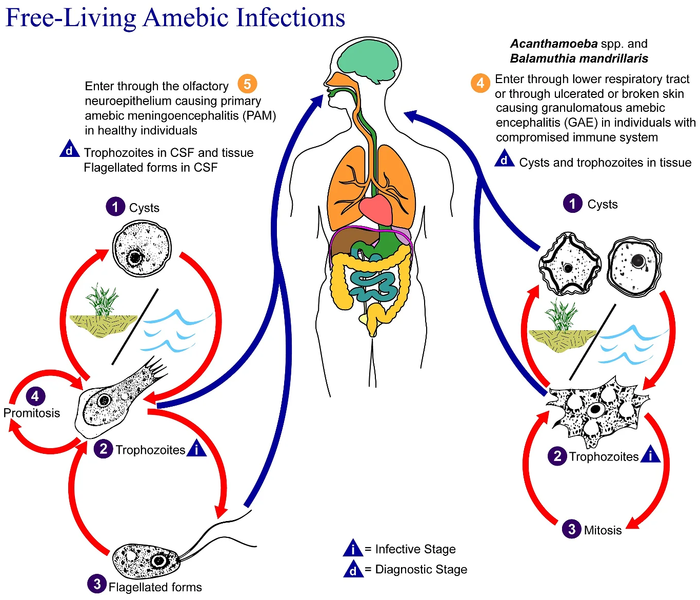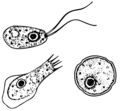Berkas:Free-living amebic infections.png

Ukuran pratayang ini: 700 × 600 piksel. Resolusi lainnya: 280 × 240 piksel | 560 × 480 piksel | 896 × 768 piksel | 1.195 × 1.024 piksel | 1.365 × 1.170 piksel.
Ukuran asli (1.365 × 1.170 piksel, ukuran berkas: 715 KB, tipe MIME: image/png)
Riwayat berkas
Klik pada tanggal/waktu untuk melihat berkas ini pada saat tersebut.
| Tanggal/Waktu | Miniatur | Dimensi | Pengguna | Komentar | |
|---|---|---|---|---|---|
| terkini | 2 Februari 2023 09.24 |  | 1.365 × 1.170 (715 KB) | Materialscientist | https://answersingenesis.org/biology/microbiology/the-genesis-of-brain-eating-amoeba/ |
| 20 Juli 2008 06.30 |  | 518 × 435 (31 KB) | Optigan13 | {{Information |Description={{en|This is an illustration of the life cycle of the parasitic agents responsible for causing “free-living” amebic infections. For a complete description of the life cycle of these parasites, select the link below the image |
Penggunaan berkas
Tidak ada halaman yang menggunakan berkas ini.
Penggunaan berkas global
Wiki lain berikut menggunakan berkas ini:
- Penggunaan pada de.wikibooks.org
- Penggunaan pada en.wiktionary.org
- Penggunaan pada fi.wikipedia.org
- Penggunaan pada fr.wikipedia.org
- Penggunaan pada gl.wikipedia.org
- Penggunaan pada hr.wikipedia.org
- Penggunaan pada is.wikipedia.org
- Penggunaan pada it.wikipedia.org
- Penggunaan pada pl.wikipedia.org
- Penggunaan pada te.wikipedia.org
- Penggunaan pada vi.wikipedia.org
- Penggunaan pada www.wikidata.org
- Penggunaan pada zh.wikipedia.org


